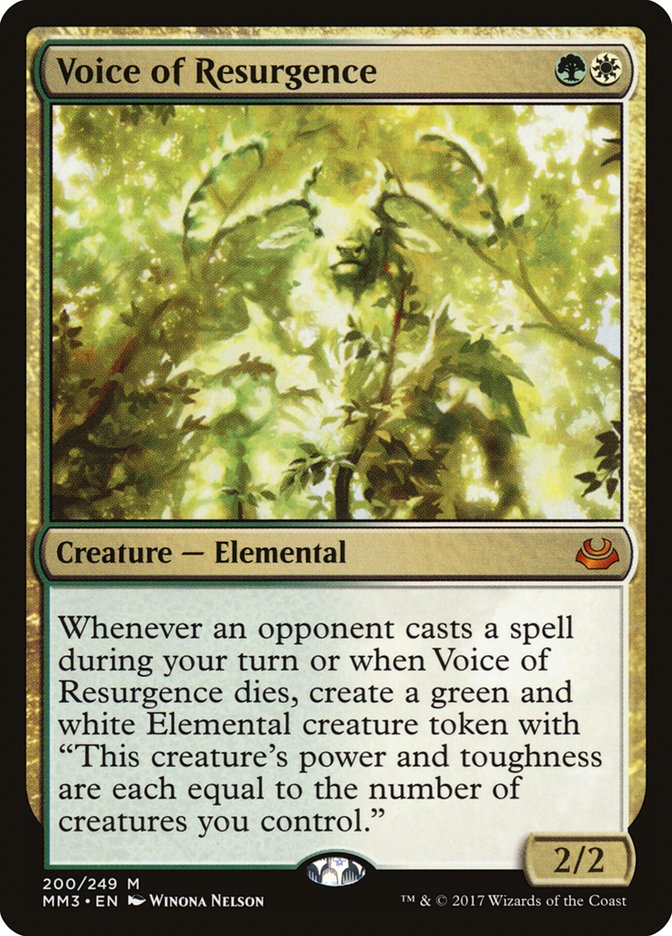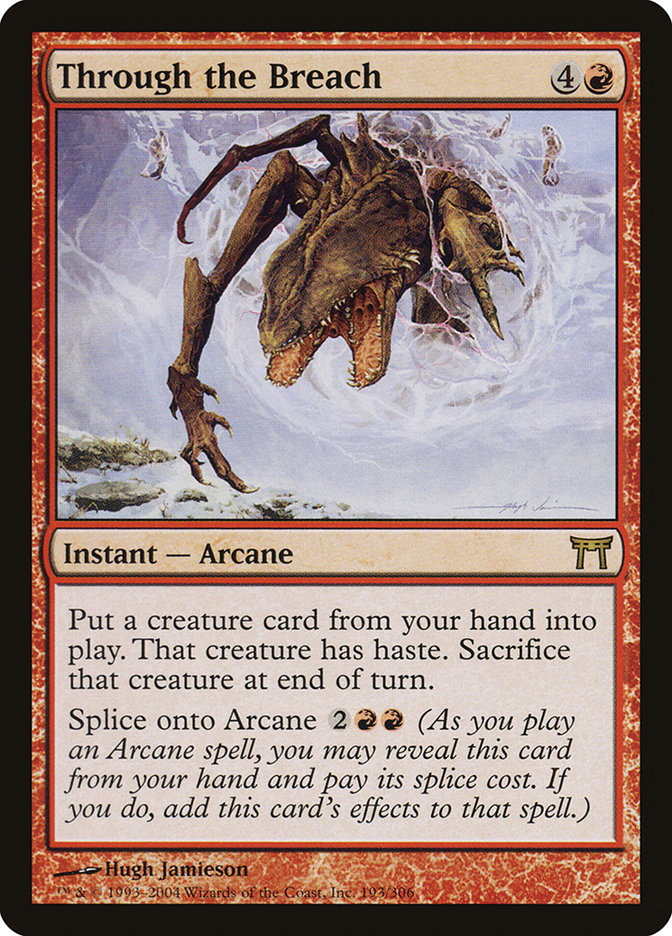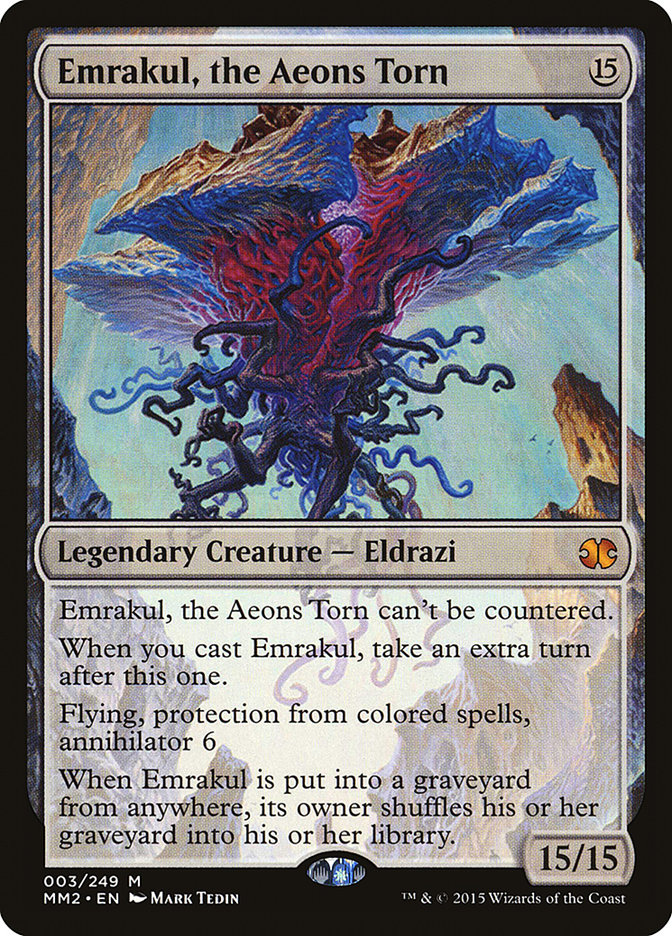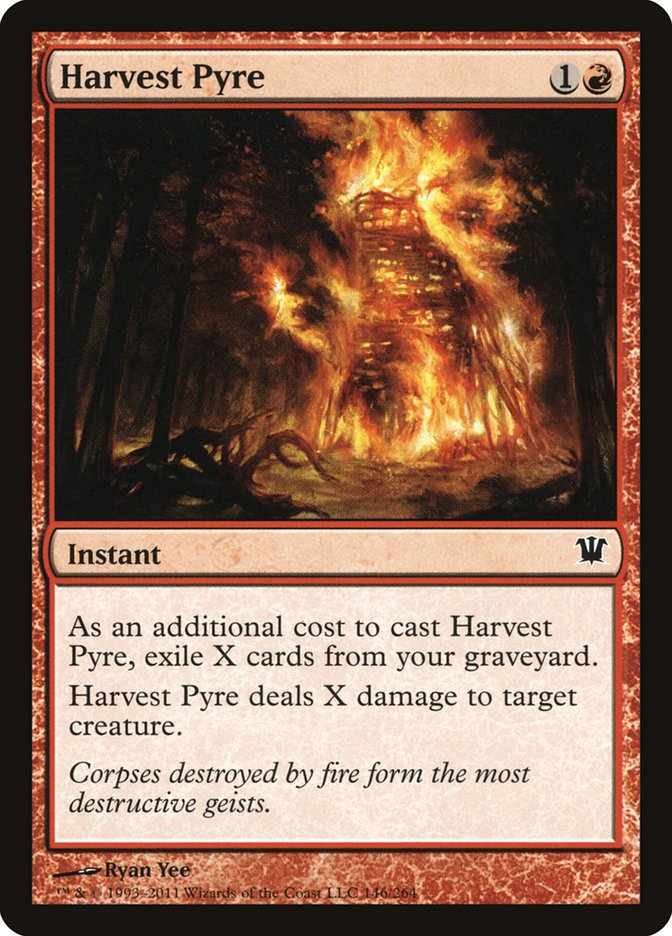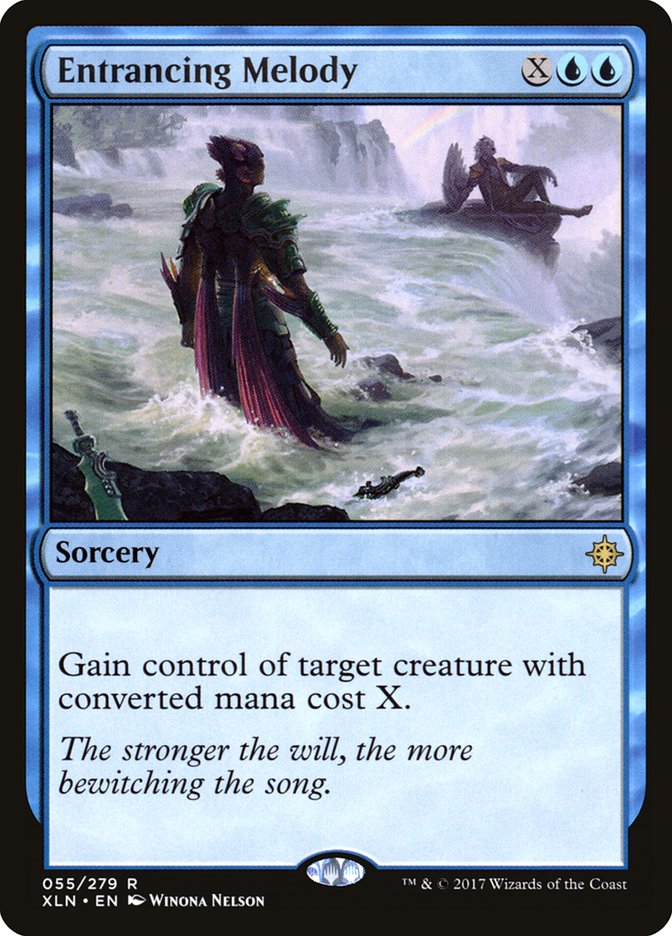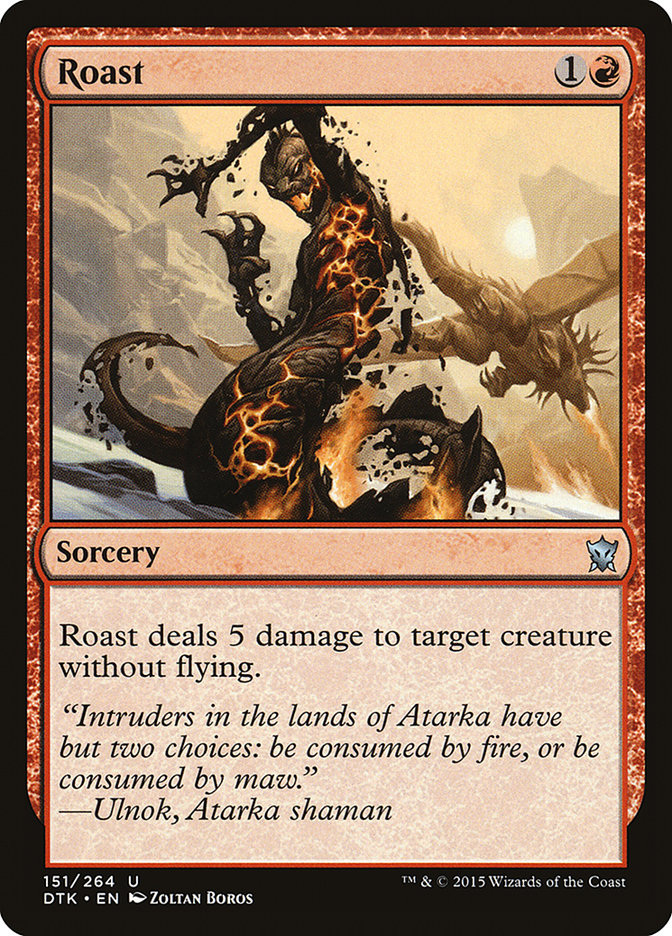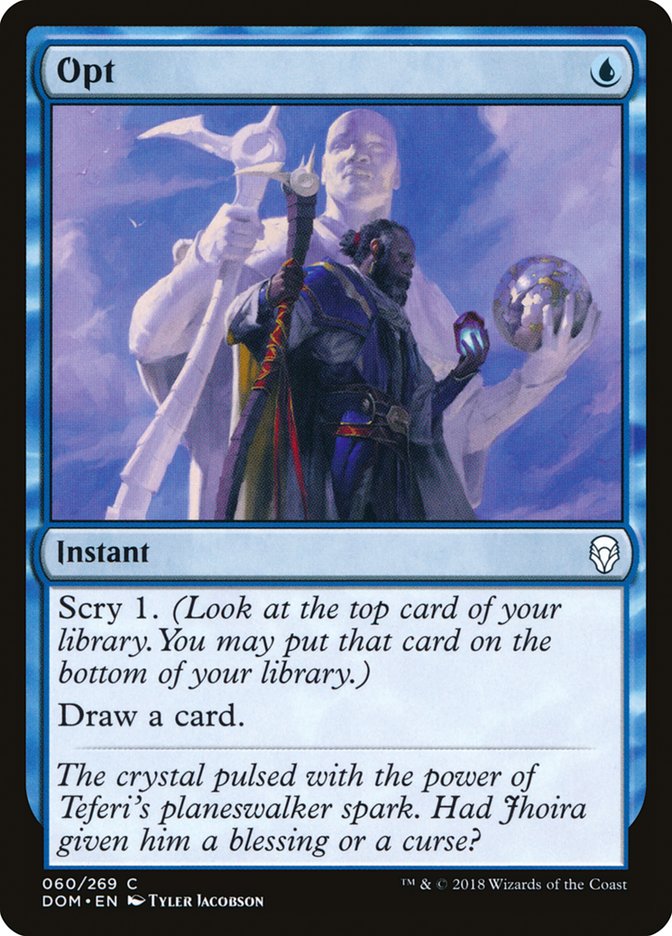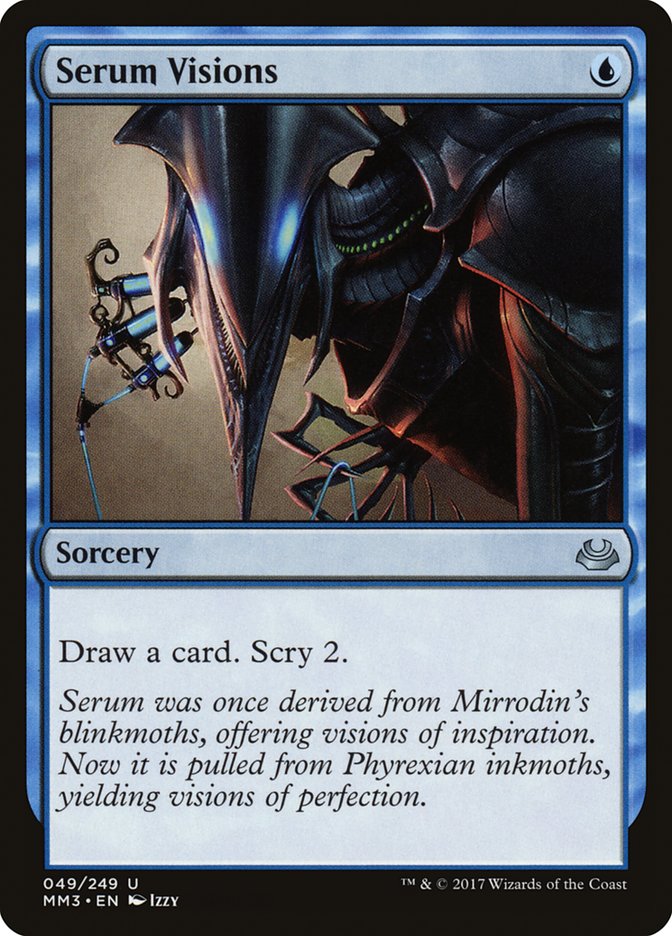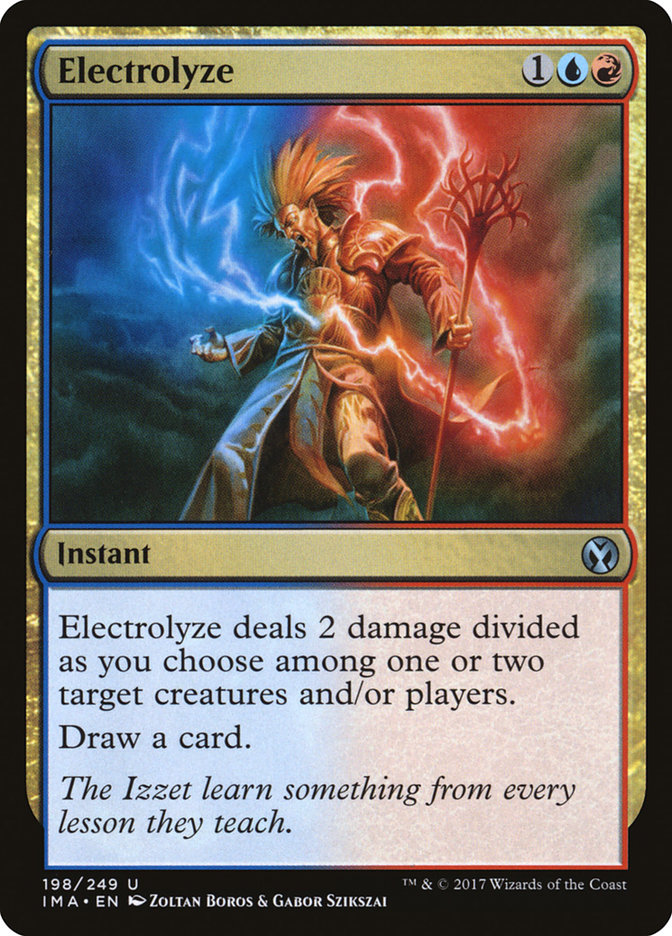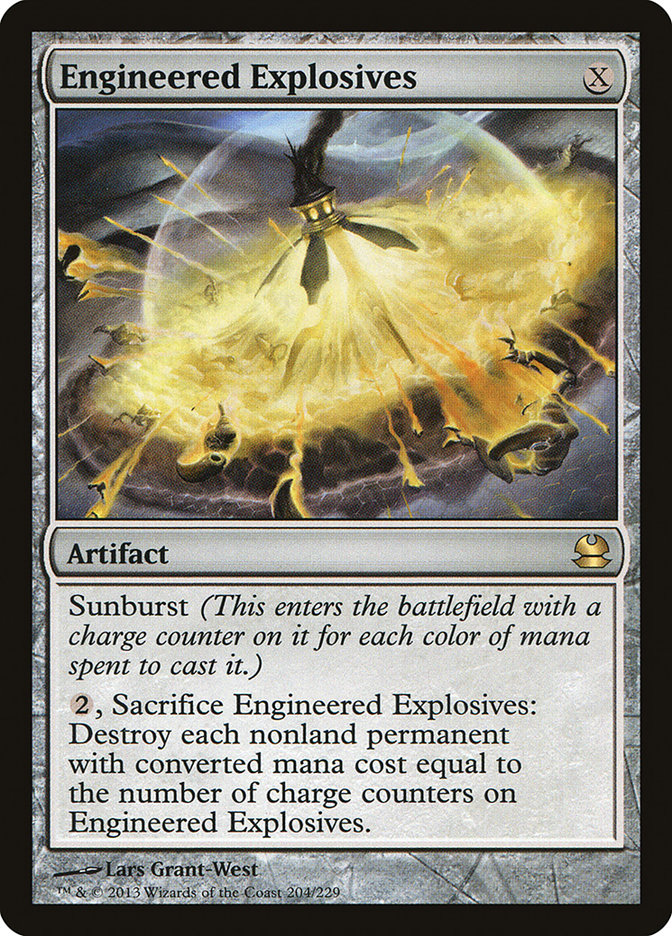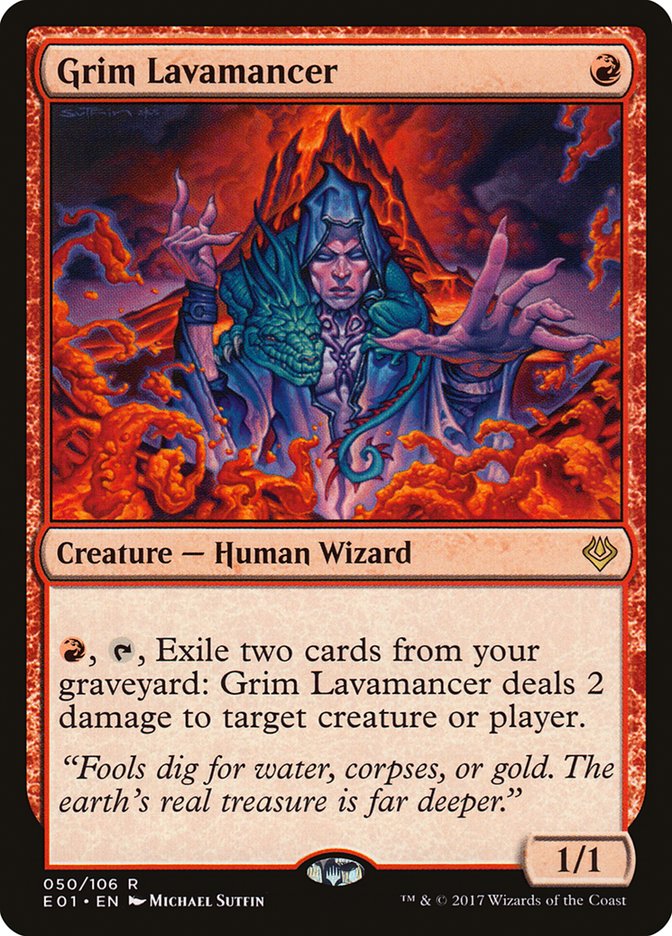When I first agreed to join Brennan DeCandio and Tannon Grace for the team
Open in Cincinnati, Tannon made a Facebook Messenger conversation for the
three of us titled “Team Get Tannon a Trophy.”
Tannon is currently the only player on Team BCW without an SCG Tour
trophy and he really wants one. Brennan and I were eager to get him one,
especially after several near misses in Team Opens before. Unfortunately,
Tannon was only able to carry us so far with some impeccable play of Grixis
Delver in Legacy, as we both made key mistakes that cost us in the
quarterfinals.
That’s Magic sometimes, but we all came away happy with our team and our
preparation, and we’ll be back at it in a month in Atlanta and Baltimore.
Before I get into my deck and card choices I want to remark a bit on why I
think our team worked so well and why Tannon and Brennan have had so much
success at Team Opens. The key is trust in your teammates.
On the surface that sounds obvious. You wouldn’t team with players you
don’t trust to perform well. But it goes further than that. Trust means
allowing each team member to make the decisions for their deck and their
games with little to no input from others. Lots of teams like to take
advantage of the format and communicate to excess, creating a situation
where too many cooks spoil the pot. It’s also why Team Opens seem to have a
higher than average number of draws, but that’s a rant for another day.
We’d like to think that getting the input of many players is a good thing,
but games of Magic are incredibly complex, and it’s nearly impossible for
someone who hasn’t been in the game for a while to be able to catch up from
looking at a single game state. They haven’t been able to see how the
opponent sequenced for the last five turns to gain an understanding of what
they are holding nor do they understand the long game plan you may be
enacting, and communicating these things is impossible to do at a
reasonable pace.
Several times when one of our team members would ask for help, if we didn’t
think we had a good answer, we would simply shrug and tell them that it’s
their game, and while the optics of that response are bad, I think it’s
helpful overall. I have played very little Standard since the recent
bannings while Brennan has and while I’m more comfortable in Legacy I’ve
only played Delver decks a handful of times where Tannon has hundreds of
matches of experience with the deck. My most effective help for Tannon was
during his matchups with Elves and Storm, where I provided valuable insight
from the side of the matchup I knew.
Even the most common ask in team events, mulligan decisions, can be too
much. For example, in my match against Riley Curran, I had an opening hand
with two copies of Blood Moon, a Remand, a Cryptic Command, and three
lands. This is a fine hand, but my intuition told me to mulligan. I asked
Brennan, and he said it was a keep, which it is without context. But as
soon as Riley cast a Voice of Resurgence on turn 2 the game was over and I
knew why I had such a strong intuition: Riley Curran always plays green
creature decks and my hand was bad against those.
I wasn’t able to articulate that to Brennan in the moment and as a result
he was giving advice without the proper context. Had I simply mulliganed my
teammates would’ve trusted me and I may not have had to get lucky with some
timely draws in the final two games to take the match.
If you want to perform better in team events, stop communicating as much
and focus on your game. Playing one game is a lot easier than playing a
third of three different games.
That mutual trust extended to our deck choices and deckbuilding. We
certainly took more team input on those choices since we have plenty of
time before the tournament, but the final decision ultimately belonged
entirely to the pilot of that deck. For Tannon that was easy, since Grixis
Delver is still easily the best deck in Legacy and he’s very comfortable
with it, especially in mirror matches. I knew Brennan would play some deck
with The Scarab God, so the big decision came down to me.
The deck I’ve been playing in Modern, Humans, has been performing well
since the unbanning of Jace, the Mind Sculptor and Bloodbraid Elf, but I
had some reservations about the deck, due mostly to the nature of team
events.
Typically, a powerful, proactive deck that has generically good disruptive
elements is great in Modern because you’re not at the mercy of your
matchups. Humans has a quality plan against decks as disparate as Jund and
Storm. Reactive decks, on the other hand, need to draw the right half of
their deck in game 1 and hope their sideboard is adequately prepared for
whatever linear decks they happen to be paired against that weekend. These
decks tend to take a couple matchup losses in every tournament, which makes
it difficult to achieve the superlative record needed to make the top 8.
But in team events you’re able to take a loss as an individual and still
win the match. If all of your team members go 11-4 or better you’re going
to be in good shape unless you distribute your losses poorly, so the goal
shifts from having the highest ceiling towards raising your floor. Reactive
decks have such a high floor due to their low fail rate and are thus,
better positioned in team events than individual events.
That said, I think reactive decks also get better in general in a metagame
where Jund is the best deck. Jund is quite good against the fastest linear
decks since they are the least resilient to disruption. As a result, the
slower, more resilient linear decks like Tron, Scapeshift, and Ad Nauseam
become more popular, and these are much easier to defeat with counterspells
since they give you time to make land drops and cantrip into disruption.
Team events magnify these metagame trends since the better players, who are
more likely to be playing well-positioned decks rather than pet decks, more
easily rise to the top since it’s a lot harder to lose two out of three
matches with a skill advantage in all three than it is to lose a single
match. With all these factors in mind, I decided to branch out into new
territory with Blue Moon.
Blue Moon is excellent against the big mana decks I expected to increase in
popularity, advantaged against most aggressive decks like Humans and
Affinity, and a favorite against other control decks because it has more
counterspells, burn to answer opposing copies of Jace, the Mind Sculptor,
and Blood Moon to limit the opponent’s available blue mana for counter
wars. It’s behind against the most popular deck, Jund, but not by much, and
the matchup is one where I hoped to leverage a skill advantage against most
opponents.
This was still a Modern tournament and that meant having to face a diverse
field, but my prediction was that while I may underperform on day one, my
teammates would carry us to day two, where I would be able to shine. Sure
enough, I took two losses on the first day with the potential for more had
I had to play out a couple other matches, but swept the swiss on day two
before taking my first Sunday loss at the worst possible time, in the top
8.
After locking in the deck on Wednesday, I set about tuning my exact list.
Here is where I registered:
Creatures (7)
Planeswalkers (3)
Lands (23)
Spells (27)

To Combo, or Not to Combo?
The primary decision to make when building Blue Moon is to decide on a win
condition. There are two options for a combo finish in Through the Breach +
Emrakul, the Aeons Torn, Pestermite + Kiki Jiki, Mirror Breaker, as well as
the option to play fair and win with assorted creatures and Jace, the Mind
Sculptor.
I initially tried the Breach + Emrakul list with the idea that the combo
cards weren’t as much of a liability with Jace, the Mind Sculptor to
Brainstorm them away when unnecessary. But in practice if you’re activating
Jace and it’s not immediately dying, you’re going to win. That’s how Jace
works. If it does immediately die, you probably need to combo quickly or
die yourself so there’s rarely a point where filtering away combo pieces is
beneficial. It’s ultimately better to replace the combo pieces with more
disruption so you’re more likely to untap with Jace in the first place.
In particular, the combo pieces are a huge liability against heavy
disruption decks, like Jund, a matchup that I wanted to help via tuning as
much as possible. You need all your cards to function on their own in those
attrition matches so having a dead Through the Breach stuck in your hand is
a disaster.
Finally, Blue Moon already has a combo kill. It’s a four card combo of
Island, Island, red source, and, Blood Moon. Despite being four cards it’s
rather easy to assemble and it kills a lot of decks in Modern right now.
Everyone knows how good it is against Tron and Scapeshift, and how good it
can be against Jund. But even less popular decks like G/W Hexproof and Ad
Nauseam are significantly hampered by an early Blood Moon. It lets your
Remands remain relevant later in the game and makes it much easier to find
a spot to land a Jace, the Mind Sculptor.
It’s not like the card is hiding anywhere – it’s right there in the name of
the deck. So many games involve interacting on the first four turns,
landing a Blood Moon with Remand backup on turn 5, and then taking over on
turn 6. Blood Moon and basics is the only combo kill you need.
After seeing Rob Pisano’s list from Grand Prix Phoenix (which you can read
about
here
) and discussing these issues with him, I was sold on the fair version of
Blue Moon.
I didn’t deviate from Rob’s list by much because all the numbers made
sense. The only significant change I made to the main deck was to swap a
Spreading Seas out for a 23rd land. My experience with Splinter Twin was
always that making land drops was essential and winning through flood
wasn’t too difficult because of how much card advantage the deck has.
I had Wandering Fumarole, Field of Ruin, and Desolate Lighthouse as options
and went with the most familiar of the three in Lighthouse, but I think
it’s close between it and Field of Ruin. Answering creature-lands in games
you don’t have Blood Moon is important, but potentially giving your
opponent a basic to play through Blood Moon is embarrassing. If I play the
deck again getting a better handle on that slot will be a priority.
The other main deck card I want to discuss is Harvest Pyre. And by discuss,
I mean sing its praises. I don’t see this one as often as I should because
it’s the best main deck removal spell for Tarmogoyf and other big
creatures. Reactive decks want as many instants as possible because if you
tap out for something and then fall behind to your opponent’s next play,
it’s hard to get out of the cycle of tapping out to answer that and hoping
they don’t have a follow-up play to put you back in check. Obviously the
delve aspect of the card gives it diminishing returns, but the first copy
is excellent, and I wouldn’t leave home without it.
In the sideboard, I was two cards different than Rob’s list. I cut a Relic
of Progenitus and an Anger of the Gods for a second copy of both Dispel and
Ceremonious Rejection. I wanted the help against control and Eldrazi decks
and decided to virtually throw away the matchup against graveyard decks,
namely Dredge and B/R Hollow One. Hollow One is the worst matchup in the
format for Blue Moon so I wanted to rely on my teammates to carry me should
I be paired against it rather than sacrifice the necessary sideboard space
to give myself a shot. Dredge isn’t as bad because they aren’t as explosive
and Blood Moon can put a damper on their plans, but Bloodghast and Prized
Amalgam are still great going long.
I also considered a single Entrancing Melody over the second Roast, but
ultimately sided with the latter for mana efficiency against Eldrazi decks
and delve creatures. Melody is excellent against Tarmogoyf and Dark
Confidant so if you’re less worried about aliens and moreso about monsters
of indeterminate species, I’d encourage you to make the swap.
In the tournament I didn’t get as many control mirrors as I
wanted/expected, but I also dodged the graveyard decks and stole a match
against G/W Hexproof so it all balanced out well. There aren’t many changes
I would make moving forward, but here’s an updated list:
Creatures (7)
Planeswalkers (3)
Lands (23)
Spells (27)

I noted earlier that reactive decks want as many instants as possible so
they can keep their options open for as long as possible. Favoring Opt in
the cantrip split is no different as the ability to hold up Spell Snare on
turn 2 and still use mana if your opponent doesn’t play into it or land an
aggressive Snapcaster Mage while still getting value is more important than
the extra digging power of Serum Visions. Also, as the game goes long
having the scry before you draw becomes more and more important so I’d
rather draw excess copies of Opt than Serum Visions.
Simply put, I hate Electrolyze. Sure, it’s great when you’re getting the
full three for one but outside of Affinity, which is on the decline, that
essentially never happens. I’m sure I’ve done more damage to players than
creatures with it because shock isn’t killing much these days. It’s often
too slow to answer Dark Confidant and at three mana it can even be a
liability against Thalia, Guardian of Thraben. It looks good against mana
creatures, but you’re Bolting those on turn 1 every time and killing two
mana creatures on turn 3 is good, but not great. The upside of the card is
high enough for me to play one, but that’s it.
Engineered Explosives is still great in all the matchups where Electrolyze
is and better in several others. It answers Tarmogoyf, sweeps up small
creatures, and is actively good against tax effects like Thalia since you
can set X to be less than you want and use the tax mana to get more
sunburst counters. Moving an Engineered Explosives into the main deck also
frees up a sideboard slot to help against graveyard decks, since in an
individual event I wouldn’t feel as comfortable sacrificing those matchups.
I’d like to try a singleton over the third Relic of Progenitus because
Relic can be too slow against Hollow One’s best draws. Your clock is slow
enough that removing every copy of Bloodghast or Flamewake Phoenix is
relevant and removing them from the initial wave makes your spot removal
against Hollow One more effective. In general I’ve always been a fan of
mixing up your hate cards, especially in a deck with lots of card
selection, but I won’t be afraid to go back to Relic should Surgical prove
ineffective.
Disclaimer: if you decide to try a Surgical yourself,
please…please…please stop bringing it in against fair decks to counter a
Snapcaster Mage trigger or something similar. This point has been argued at
length for over a decade and yet I still see it with regularity. Just stop.
Unlike Electrolyze, I love this card, but it’s a casualty of wanting
another copy of Anger of the Gods. It’s among the best cards in the format
against Humans, but the lack of immediate effect can be a liability in a
lot of matchups, especially if you draw it while behind.
Even outside of the great result, this was the most fun team event I’ve
participated in. I had soured on team tournaments recently since the
logistics are more complicated unless you have a consistent team for each
event, which is hard to do when there are so many of them and you often
don’t have three people who are interested in traveling to exactly the same
events. But now I’m looking forward to carrying the Modern banner for Team
BCW for the foreseeable future. I get to focus on the format I’m playing
the most anyway, so the logistics of team events are much simpler and my
teammates are great.
We’re going to get Tannon that trophy.


